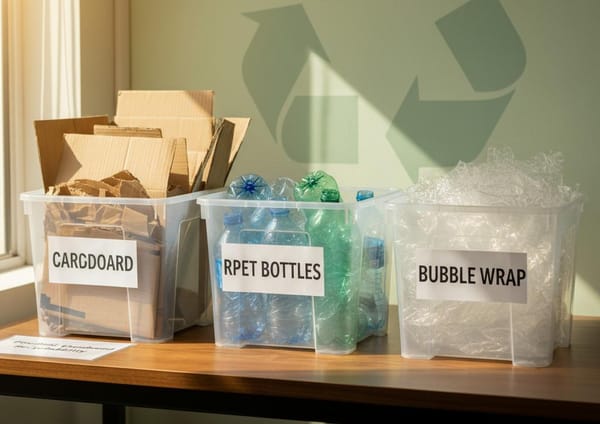What makes renewable materials greener than plastics?

Renewable Materials: A Quiet Revolution in Design and Manufacturing
Renewable materials are at the heart of a quiet revolution in design and manufacturing. Because we face shrinking resources and rising waste, choosing materials from renewable sources matters now more than ever. This article explores how renewable options reshape the life cycle of everyday products, including reusable straws, and why they deliver real environmental value.
Across industries, designers and consumers demand eco-friendly, low-carbon choices. As a result, bio-based fibers, plant-derived polymers, and compostable blends move from niche labs into mass production. These options reduce reliance on fossil fuels and open paths to circular design and true material recovery.
For businesses and households alike, the growing need for sustainable materials is practical and urgent. Switching to renewable materials often means lower embodied emissions, fewer microplastic leaks, and easier end-of-life handling. However, trade-offs remain, so understanding the full footprint of materials matters.
In the sections that follow, we break down common renewable candidates, compare their real-world impacts, and offer clear guidance for choosing straws and similar products. Whether you design, buy, or reuse, this guide helps you weigh performance, cost, and planetary benefit.
Types of renewable materials and why they matter
Renewable materials come from sources that regenerate naturally over short time spans. Because they renew, they reduce dependence on fossil resources and open the door to lower-carbon products. Below are common types used in everyday items like reusable straws, tableware, and packaging.
- Bamboo
- Fast-growing grass that needs little fertilizer or pesticides. Therefore it delivers strong, lightweight products that biodegrade more easily than many plastics.
- Because bamboo regrows quickly, it often has a low embodied carbon footprint when sourced responsibly.
- Cork
- Harvested from the bark of cork oak trees without cutting the tree down. As a result cork supports long-term carbon storage and biodiversity.
- It performs well for insulation and lightweight products and resists moisture and wear.
- Recycled plastics and bioplastic blends
- Recycled polyethylene terephthalate and other recycled polymers cut demand for virgin fossil feedstocks. However, quality and contamination matter for reuse and recycling.
- Plant-derived polymers such as polylactic acid (PLA) offer compostable options, but they often require industrial composting and clear labeling.
- Organic fibers (hemp, cotton, linen, wool)
- These fibers come from plants or animals and provide renewable, often biodegradable alternatives to synthetic textiles.
- In addition they support rural economies, though they need careful land and water management to minimize impacts.
- Wood, paper and pressed-fiber composites
- Sourced from sustainably managed forests or reclaimed wood, these materials are familiar and widely recyclable. Certification like FSC helps ensure good forest practices (see UN FAO on sustainable management).
Environmental and economic benefits
Using renewable materials delivers clear gains, but it also requires trade-offs. Below are the main benefits and important considerations.
Environmental benefits
- Lower embodied carbon because many renewable materials store biogenic carbon and avoid fossil feedstocks. Therefore they often cut lifecycle emissions.
- Reduced microplastic pollution when products avoid or replace synthetic polymers. As a result fewer persistent fragments enter ecosystems.
- Improved end-of-life options such as recycling, composting, or biodegradation when systems exist to process them properly.
- Supports biodiversity and soil health when crops use regenerative practices.
Economic and social benefits
- Supply diversification reduces exposure to oil price swings and long-term resource risks. Consequently businesses gain more resilient sourcing.
- Job creation in farming, forestry, and local manufacturing, which helps rural economies and regional supply chains.
- Strong consumer demand for greener products can boost brand value and sales. In addition companies often save on taxes, fees, or waste costs when they adopt circular materials.
Key trade-offs and what to watch for
- Land and water use: Some renewable crops need space and irrigation, so evaluate impacts against food production and biodiversity.
- End-of-life reality: Compostable plastics require industrial composting. Therefore clear labeling and local infrastructure must match product claims.
- Certification and supply chain transparency: Look for third-party labels and reported life cycle data. For practical guidance on reducing your footprint, see this primer on cutting environmental footprints.
Where recycled plastics help
Recycled polymers can play a major role because they reuse existing material and reduce waste. However, recycling systems vary by region, and contamination lowers value. For deeper analysis of whether renewable materials can replace single-use plastics, read this review: Renewable materials and plastics.
How renewable materials cut plastic waste in practice
In many applications, switching to renewable feedstocks and recycled content reduces plastic leakage and landfill volumes. Therefore product design must plan for reuse, repair, and proper disposal. Learn more about practical reductions in plastic waste at: Renewable materials cut plastic waste.
For trustworthy guidance on sustainable materials management, consider resources like the US EPA Sustainable Materials Management program.
Comparison: Renewable materials versus traditional non-renewable materials
| Criteria | Renewable materials (bio-based, recycled) | Traditional non-renewable materials (virgin plastics, fossil feedstocks) |
|---|---|---|
| Source | Plant, wood, agricultural residues, recycled polymers | Oil, natural gas, mined metals |
| Renewability | Regenerate on human timescales or repurposed from waste | Finite; require extraction and depletion |
| Environmental impact | Often lower lifecycle carbon; stores biogenic carbon; less microplastic risk | Higher embodied carbon; contributes to microplastics and long-term pollution |
| End-of-life options | Compostable, recyclable, biodegradable depending on type; enables circular design | Mostly recyclable for some metals and plastics; many go to landfill or incineration |
| Cost | Variable; can be cost-competitive when scaled and when accounting for externalities | Often lower upfront cost today but exposed to oil price volatility |
| Typical applications | Reusable straws, tableware, textiles, packaging, construction materials | Single-use packaging, automotive, electronics, many durable goods |
| Resource risks | Land and water use trade-offs; depends on sustainable sourcing | Price swings, geopolitical supply risks, extraction impacts |
| Microplastic and leakage risk | Lower for natural materials; depends on composite design | Higher for synthetic polymers, persistent environmental fragments |
| Scalability | Increasing with investment in supply chains and recycling systems | Established but reliant on finite fossil feedstocks |
Innovations and future trends in renewable materials
The drive to scale renewable materials now powers rapid innovation across industries. Designers and engineers push bio-based polymers, natural composites, and recycled-content systems to higher performance. As a result, renewable materials move from niche uses to mainstream applications.
Practical innovations
- Mycelium and fungal composites
- Companies use mushroom-based materials to make strong, low-carbon packaging and insulation. These materials are lightweight, compostable, and increasingly tuned for durability. See an example developer at Ecovative Design.
- Advanced bioplastics and microbial polymers
- Emerging polymers like polyhydroxyalkanoates offer full biodegradability in natural environments. Meanwhile researchers improve polylactic acid blends to boost heat tolerance and recyclability. For a scientific overview, read this review: Nature Review.
- Cellulose nanomaterials and algae-based feedstocks
- Nano-cellulose strengthens composites while keeping materials renewable. In addition, algae provide fast-growing feedstocks for pigments, films, and foams.
- Mass timber and engineered wood in construction
- Cross-laminated timber and modular wood systems reduce embodied carbon in buildings. Thus they replace concrete and steel in many mid-rise projects.
Trends to watch
- Circular design and chemical recycling
- Design for disassembly and new recycling technologies increase material recovery. Consequently, brands close loops on packaging and textiles. Learn more about circular frameworks at Ellen MacArthur Foundation.
- Biobased coatings and barrier technologies
- Better compostable coatings make paper and fiber packaging waterproof without plastic lining.
- Textile innovations
- Alternatives to leather, such as plant leathers and lab-grown collagen, scale while cutting waste.
Why this matters
Together, these innovations improve usability, lower lifecycle impacts, and expand applications for renewable materials. Therefore investors, designers, and policymakers should watch both material science and systems-level changes. The result will be more durable, repairable, and truly circular products in the near future.
Renewable Materials and Low-Carbon Choices
Renewable materials put low-carbon choices within reach. They lower embodied emissions, cut microplastic risks, and enable circular design. Above all, they change product lifecycles from wasteful to repairable and reusable.
For businesses and designers, choosing renewable materials means redesigning for reuse and clarity at end of life. For consumers, it means preferring durable, repairable items and supporting brands that report lifecycle data. Policy makers can help by funding composting and recycling infrastructure, and by setting clear labeling rules.
When you choose materials, look for verified certifications, clear end-of-life instructions, and recycled content. Prefer materials that match local processing systems, because compostable items need industrial composting to work. Moreover, consider total impact, including land use and water demands.
Together, small choices add up. Therefore adopt renewable materials when you can, and demand better systems when you cannot. In this way, we reduce waste, protect ecosystems, and build resilient economies. The future looks brighter when materials renew themselves — choose wisely and act now.



